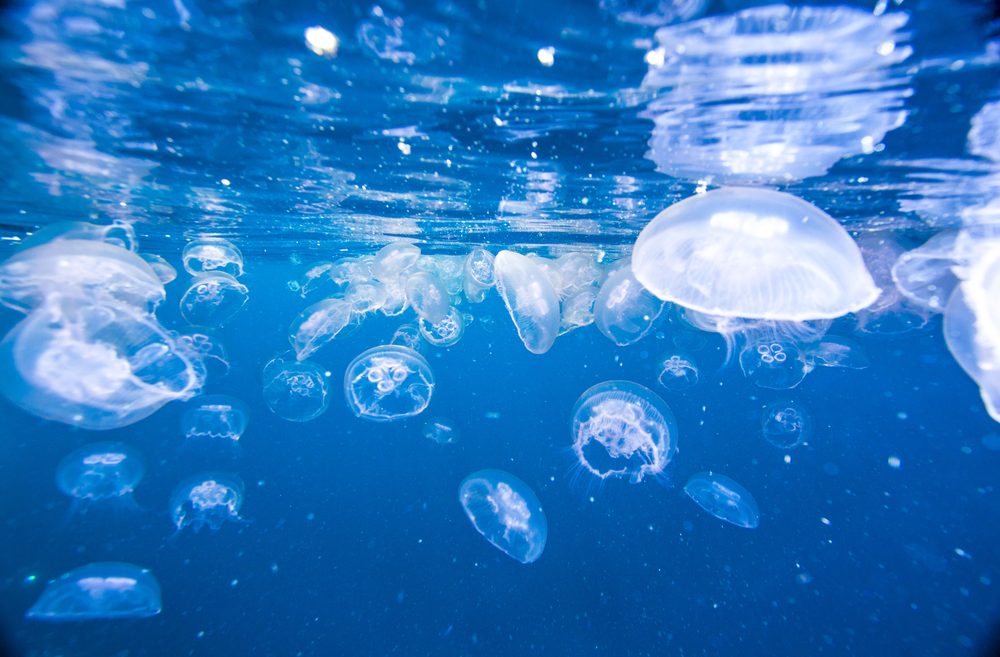Swarms of jellyfish hit the Mediterranean coast every summer but they’ve arrived a bit earlier than usual this year. That’s indicative of the steadily growing quantity of the dreaded blob-like creatures worldwide.
Anyone who’s ever had an unfortunate encounter with jellyfish knows that these aquatic animals can give a nasty sting. It’s how they attack their prey (plankton) and defend themselves.
The stinging cells in a jellyfish contain tiny syringes that are actually poison arrows, say Israeli researchers who are the first to explain the unique stinging mechanism of the nomad jellyfish.
“The jellyfish attacks its prey or its enemy by injecting a toxic substance by means of thousands of microscopic syringes located on each of its tentacles. The syringe is located inside the stinging cell (nematocyte) and is packaged inside a spherical capsule about 10 microns in diameter,” said Prof. Uri Shavit of the Faculty of Civil and Environmental Engineering at the Technion-Israel Institute of Technology in Haifa.
“In response to chemical changes in the environment or physical contact, pressure increases inside the capsule and the needle is ejected at a tremendous acceleration of more than 50,000,000 meters per second – one hundred times the acceleration of a rifle bullet,” Shavit revealed in a recent study published in the Journal of the Royal Society Interface.
The needle’s firing mechanism, from a folded position in the capsule to its full length, is being studied by many researchers around the world.
The conventional understanding is that the needle is pulled out and shoots the poisonous substance following the creation of a force mechanism called osmotic potential. This force pushes the needle and liquid like a pump pushing water upwards inside a building.
The pressure exerted in this process is equal to that needed to pump water to the top of a building a kilometer and a half high.
Like a locomotive pulling railcars
However, Shavit and colleagues from the Technion and the University of Haifa found that the driving force is not limited to the capsule. A powerful osmotic mechanism releases the needle and pulls it like a locomotive pulling railroad cars.
The researchers were able to route the needle’s direction, using an experimental microfluidics system developed by Technion mechanical engineer Gilad Yossifon and Tamar Lotan of the University of Haifa’s Charney School of Marine Sciences.
“Each capsule was placed at the opening of a micro-channel that bridged between a central water channel and another channel that contained oil,” explained Shavit. “We found that when the needle penetrated through oil, its elongation rate decreased by three orders of magnitude, from 50 milliseconds in water to about 25 seconds in oil.”
According to Shavit, “This means that the osmotic potential can be influenced along the pathway of the needle, thus reducing its ability to penetrate the skin and preventing the stinging.”
While this advance in revealing the mechanism of jellyfish stings may prove helpful in sparking ideas for preventing stings, the study authors have a different use in mind: Mimicking the way a jellyfish stings could serve as the basis for an improved method for delivering drugs.
“This new understanding is vital for future development of nematocyst-based systems such as osmotic nanotubes and transdermal drug delivery,” they wrote.
Want to learn more about jellyfish without any chance of getting stung? Visit the Jellyfish Gallery at the new Gottesman Family Israel Aquarium, opening in July for group visits and later in the year to the general public, on the campus of the Jerusalem Biblical Zoo.
















